Max Allan Collins's Blog
November 18, 2025
Nate Heller – History or Mystery?
I occasionally get a nice e-mail from a reader who likes one thing or another of mine (or several things, which is really nice) and I do my best to answer all of these. I don’t mean to imply I’m swimming in praise, but sometimes I mean to respond and don’t get around to it. Things can get lost in the shuffle when you’re busy writing or getting a pacemaker put in.
For that reason, if you happen to be one of those who’ve written and been ignored, you weren’t really being ignored, your missive just got away from me. Please know I appreciate hearing from you. And I’m pleased to say I rarely get a negative letter from a reader.
Same goes for the comments that appear below each of these Update/blog entries. I read everything and usually respond, but not always.
Recently a reader who obviously read a lot of my stuff said the Heller novels didn’t trip his trigger like Quarry and Nolan. I get that, particularly when a reader doesn’t care for a book of the kind of length that Heller usually runs. Quarry and Nolan tend to appear in books that are quick reads – 50,000 to 60,000 or so. And Heller tends to appear in books of 80,000 words or more. True Detective was the longest first-person private eye novel ever written, until I wrote the even longer Stolen Away.
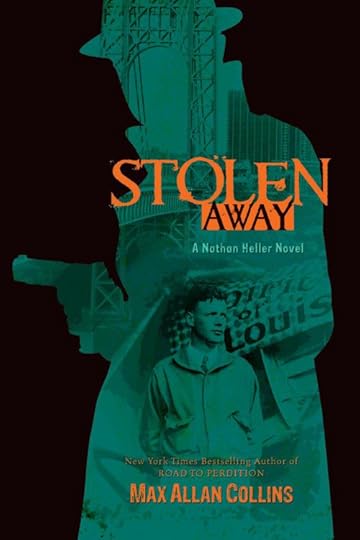
I myself find that Heller is rather daunting for me at this age. The breadth of research is staggering and the many chapters a challenge. In some ways I am a better writer now than I ever was. Mickey Spillane felt a writer should get better with age, because of being at it longer and gaining more experience in both art and life.
But in other ways I’m not the writer I was.
It isn’t just age. But the experience part Mickey mentioned applies to just being on the planet a while, and the fiction writing – like reading – depends on where you are in this string of seconds, minutes, days and years called time.
I recently re-watched The Verdict (1982) starring Paul Newman and written by David Mamet. I revisited it in part because I had been responsible in a way for the last motion picture this great film actor ever made, and had met – and been intimidated – by him. (I’ve written about that here before.)
But I am no fan of David Mamet. I find him mannered and pretty much despised his screenplay for The Untouchables. It has that great “Chicago way” speech of Sean Connery’s, but is a knuckle-headed and lazy take on Eliot Ness and Capone. I even turned down the novelization (stupidly, because it would have boosted sales of my Eliot Ness novels).
I had seen The Verdict when it came out and thought it good but overrated. Barb and I, pre-Covid lockdown, would go to at least one movie a week; and I sometimes went alone, too. So I find now, in my dotage, that I often remember nothing about a movie I saw twenty or thirty or more years ago except (a) that I saw it, and (b) remember my opinion of it.
The Verdict this time around seemed a near classic, a terrific courtroom drama and a fantastic character study from Paul Newman, who had a drinking problem in life that he explored in this particular performance. Fucking brilliant. And Mamet’s script didn’t strike me as mannered at all, and extremely well-constructed.
I am a different person going to the movies than I was years ago.
Right now I’m not going to theaters much at all, and doing considerable watching at home. You probably are the same. I’ve seen some stellar flicks in 2025 – Sinners, Weapons, One Battle After Another – and encountered some of the best TV ever, notably Slow Horses and the under-seen Chantal.
But I am also at odds with some things that a lot of people, smart people, really like – we walked out of the new Predator movie, and would have walked out on Guillermo del Toro’s Frankenstein if we weren’t home streaming it. In any case, we didn’t make it past an hour. We found it a precious thing, the kind of movie where you walk out humming the costumes.
Your mileage may vary, of course, but my point is that we see things at a specific point in time and who we are at that time – this obviously goes for books, too – impacts how we take things in. Barb and I – both of us big Breaking Bad and Better Call Saul fans – hated creator Vince Gilligan’s Pluribus. Son Nate liked it.
Nobody’s right, nobody’s wrong. Well, sometimes things are just plain bad, but you catch my drift. A novel or a film is the artist plus the someone taking in that novel or film. The reader’s mind, the viewer’s mind, is where the novel or film plays out. I often have said that sometimes my stuff plays on Broadway and sometimes at the Podunk Community Playhouse.
Of course some reviewers have considered my micro-budget Christmas movie Blue Christmas barely worthy of a community theater. But quite a few others have praised it and were able to meet it on its own modest but sincere terms.
As for Heller not tripping a reader’s trigger where Quarry or Nolan or the Antiques mysteries do, I only hope it’s not the history aspect that puts such readers off. I admit that Heller was a way for me to combine my love of historical fiction with that of hardboiled mystery fiction. Do most of my readers even know who Samuel Shellabarger was? That his novels Captain from Castille and Prince of Foxes were my favorites at the same time I was inhaling Hammett, Chandler and Cain? Or that my favorite novels as an adolescent were The Three Musketeers and The Mark of Zorro? Or that Mickey Spillane’s faves were The Count of Monte Cristo and Prisoner of Zenda? (Shellabarger, by the way, was originally a mystery writer, under several pen names.)
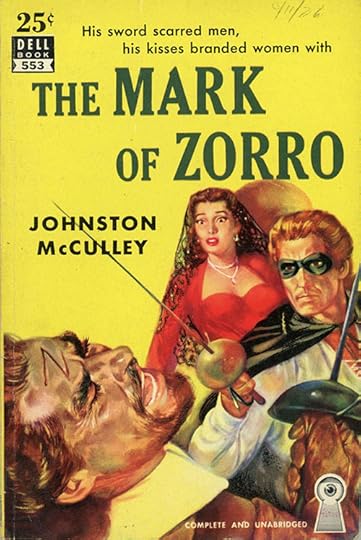
But to readers who duck Heller because of the historical aspect, know this: the first intension is to write a classic private eye novel in the Hammett/Chandler/Spillane (Father, Son and Holy Ghost) vein. That is the goal and I think I’ve achieved it.
Interestingly, when I moved Heller to Hard Case Crime, editor/publisher Charles Ardai was pleased that The Big Bundle was based on a less-remembered crime than other books in the Heller series. He felt the HCC audience might be put off by the historical aspect.
What prompted this rambling missive to you, Dear Readers, is a particularly nice e-mail I received, and which I will share with you now, from Andrew Lewis – a fellow Iowan!
I hope this letter finds you well. I have been a fan of detective fiction since picking up The Hound of The Baskervilles at an elementary school book fare. Over time I’ve delved into Hammett and Chandler and even some of the better Batman comic books from the late 70s, but nothing has ever punched me in the face like the Mike Hammer novels.What Mickey Spillane does with storytelling is, in my mind, what Lou Reed did with song lyrics, say very profound things using the most simple language you can. I’m five chapters in to
Kiss Her Goodbye which is, thus far, the 3rd Hammer novel I’ve read which you’ve completed. It’s hard to tell where Mickey stops and Max starts. It’s got some Black AlIey elements the same way Lady Go Die had some Twisted Thing elements, ideas set aside, forgotten, and reused. I’m all in.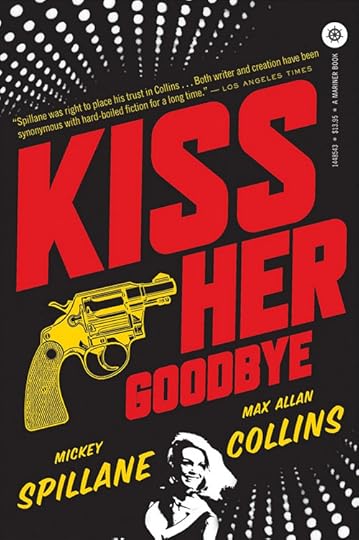 I am confused about the timeline. Hammer indicates in the novel that he made it halfway through 12th grade before lying about his age to enlist in WWII. That would make him maybe 72 in 1996 when Black Alley is set. I understand that King of The Weeds is a sequel to that novel. Is there a set chronology or is it a suspension of disbelief where Hammer is always just as old as he needs to be for the story being told? My mind needs order, “foolish consistency” and all that.
I am confused about the timeline. Hammer indicates in the novel that he made it halfway through 12th grade before lying about his age to enlist in WWII. That would make him maybe 72 in 1996 when Black Alley is set. I understand that King of The Weeds is a sequel to that novel. Is there a set chronology or is it a suspension of disbelief where Hammer is always just as old as he needs to be for the story being told? My mind needs order, “foolish consistency” and all that. I’ve recently picked up
The Wrong Quarry and will be reading it after Kiss Her Goodbye. It’s my first journey into Quarry’s world, is it a good place to start? Thanks for taking the time to read this overly long note and for continuing the Spillane legacy.Warmest regards,
Andrew Lewis
Council Bluffs, Ia
Here is the reply I sent to Andrew:
Thanks for your great e-mail.With your permission I’d like to use it in this week’s Update/blog of mine, because you raise interesting questions that would be well answered in public.
Briefly, though, Mickey was very loose about continuity. Not as loose as, say, Rex Stout, who kept Archie Goodwin and Nero Wolfe frozen at the age at which we met them (their ages, not ours!). I have attempted to put together a continuity that doesn’t contradict Mickey, but that can only go so far. Do keep in mind
Black Alley (my least favorite of Mickey’s Hammer novels) is his final Hammer novel, and King of the Weeds was a direct sequel he began as was Kiss Her Goodbye — he set aside King of the Weeds, intended to be the final Hammer, to write a 9/11 novel, The Goliath Bone. I finished both King and Bone and kept them in relative continuity not only with Black Alley but with the entire series. King of the Weeds, by the way, is in part meant to answers questions and fix inconsistencies in Black Alley. I liked to think (and this is outrageous I know) that I “fixed” Black Alley — that reading Alley and King back to back is an improved experience…the “part two” that Mickey began writing.I always tried to set each story that I completed in time — specifically, when Mickey started (and set aside) those unfinished novels. I try to think about where Mickey was in his life, and get into his head space at that point. This means
Lady Go Die is like an early Hammer, and King and Bone like later Hammers in tone and technique. Kiss Me Darling is another one that has that early feel. Kiss Her Goodbye is more mid-stream Mickey — he designed it to be Hammer’s return to the book market after a long quiet spell…but during that quiet spell, he kept starting (and stopping) various Hammer manuscripts.I would recommend you read my biography of Mickey, co-written by James Traylor —
Spillane — King Of Pulp Fiction. I include as part of a back-of-the-book bonus content a lengthy article about how I came to write the books and how I approached each of them.Thanks again, Andrew! Let me add to that one thing: I am very fond of Black Alley (and not just because it’s dedicated to me). I grew to respect it more working with it in depth writing its sequel from Mick’s existing chapters. My disappointment with the book was the way he softened a banger ending that he shared with me in conversation, which I wound up using in slightly different form in another Hammer.
M.A.C.
November 11, 2025
You May Have Missed Some of These…
I try not to be overly commerce-oriented here, doing topics (in the Bob and Doug vein) that might be of interest to readers of mine in a fashion that doesn’t necessarily promote something that’s just come out or is about to.
Many of you who stop by here are fans of Nate Heller and/or Quarry and/or Mike Hammer, and some of the other things I do are not of much – perhaps of any – interest. I want to speak to those readers right now and discuss a few things of mine that they may not have tried.
Yes, here at the Skippy Peanut Butter Company, we have both smooth and chunky style.
I have done very well at Amazon’s publishing line, Thomas & Mercer, with my back-list titles, chiefly Nate Heller but also the “disaster” series, the five Mallory novels and a few stand-alones. My frequent collaborator, Matthew V. Clemens, has co-authored five successful T & M titles with me, including the bestselling Reeder & Rogers political-thriller trilogy, notably Supreme Justice.
I also did two novels about small-town Chief of Police Krista Larson and her retired police detective father, Keith Larson, who solve crimes in tourist-trap Galena, Illinois. These were designed to be my American entry into the “Nordic noir”-style of mystery. The first, Girl Most Likely, did rather well. The second one, Girl Can’t Help It, is the only Thomas & Mercer title of mine that hasn’t “earned out,” i.e., made back its advance.
Girl Can’t Help It is also the only novel of mine that deals with my experiences as a rock musician (I was a “weekend warrior,” singing and playing keyboards, for almost sixty years). The lack of success the novel has thus far experienced may reflect readers of Girl Most Likely not liking that novel enough to try the second in the series. I hope that is not the case, but….Anyway, I had planned a third but that never happened, for obvious reasons.
But if you like my work, you will probably enjoy meeting Krista and her father.
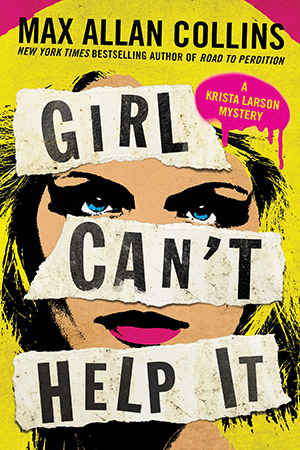
Paperback | Kindle | Audible
If you’ve followed my Mike Hammer titles, in which I complete unfinished material from Mickey Spillane’s files, you may also be familiar with the three Hard Case Crime non-Hammer titles, Dead Street, The Consummata and The Last Stand. But are you aware of the one Spillane horror novel that I completed?
The Menace, published by Wolfpack, I developed from an unfilmed Mickey Spillane film script. I had done this previously with the western, The Saga of Caleb York, also Kensington titles. The Menace reflected Mickey’s desire to meet Stephen King on the latter’s home ground, a monstrous menace terrorizing a father and his mentally challenged son, who may – or may not – be imagining he’s being protected by a resurrected Aztec mummy. I like the book a lot, but it’s easily the least read Spillane/Collins title.

Trade Paperback:




E-Book:

One of the great disappointments of my writing life has been how few readers have found their way to the John Sand trilogy written by Matt Clemens and me. The conceit of these novels, set in ‘60s period, is that John Sand is the retired (and now unfortunately famous) secret agent who James Bond was based on. These gave Matt and me a chance to expose our inner Bondian natures, and I frankly think these books they’re terrific. They were published individually by Wolfpack. Here’s the third of the three.

Trade Paperback:





E-Book:

Audiobook:

I talk about the Antiques series here frequently, the slyly subversive “cozy” mysteries that my wife Barb and I write together. It’s the longest-running series of mine, at 20 books, and (as you probably know) we recently mounted a movie, Death By Fruitcake, based on a novella featuring mother-and-daughter sleuths, Brandy and Vivian Borne.
Look. You may be after the tough stuff I peddle, the hardboiled Heller, the noir poster-child Quarry, the uber-tough Mike Hammer; but the Antiques series is filled with wacky humor and twisty mysteries, and — if you haven’t tried one – you are (in my completely unbiased, wholly objective opinion) missing out.
Also, some longtime readers of the Trash ‘n’ Treasures/Antiques mysteries have fallen away since we moved the series to Severn House, our British publisher who sometimes don’t make us into your local Barnes & Noble or BAM! (This is not Severin’s fault – the stateside brick-and-mortar bunch are to blame, indie booksellers somewhat better about it.) But, at any rate, you may have been having trouble finding the last few Antiques titles. The current entry is a good one for longtime fans, who’ve fallen away, and new readers, who haven’t boarded the Serenity Trolley yet.

Hardcover:






E-Book:




I mentioned last week that my little micro-budget movie Blue Christmas is available at Amazon – $7.49 for the DVD and $10.87 for the Blu-ray.
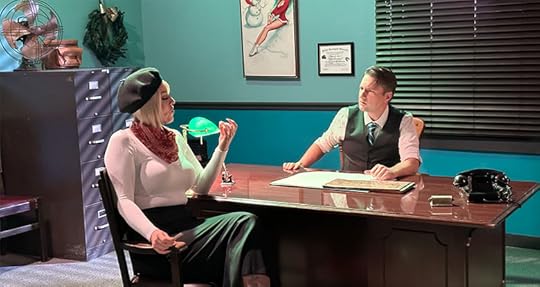
Blue Christmas can be streamed now on Tubi and The Roku Channel for free with ads, and on Amazon Prime Video for a modest price. Tubi runs a handful of commercials up front before presenting the film without any interruption.
The source of Blue Christmas is my novella A Wreath for Marley, which is the lead story in my Wolfpack-published Blue Christmas & Other Holiday Homicides.
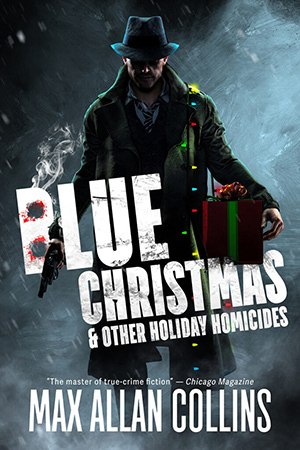
E-Book:

Trade Paperback:




Copies of the Blu-ray and DVD’s of Blue Christmas are perfect stocking stuffers. In my opinion. So would a copy of the Blue Christmas short story collection. And your personal bookshelves are yearning for all of titles here – unless you already have them, in which case…God Bless Us, Everyone.
* * *Here is a fun review of Tough Tender at the Pulp, Crime & Mystery Books site.
Quarry gets some love from borg here.
And this is a terrific article on the film version of Road to Perdition.
M.A.C.
November 4, 2025
Blue on Blue
We’re officially in holiday season, now that it’s November and the holiday everybody actually prefers (Halloween) is over. So it’s time for me to remind you about my little Christmas movie, Blue Christmas.
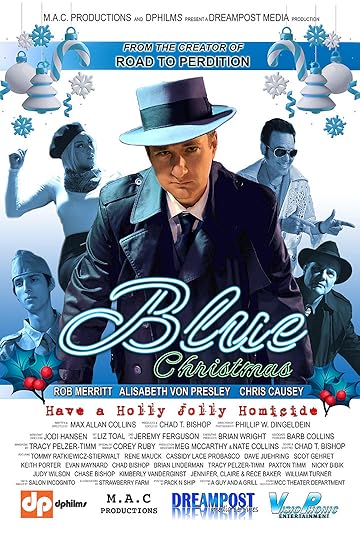
A couple of things.
We’ve had many nice reviews and a few negative, even nasty ones. Some reviewers don’t know how to deal with a micro-budget movie shot in six days on one set; I get that. But the majority of reviewers know how meet a movie on its own terms, and a whole lot of ‘em have liked our little Maltese Falcon/A Christmas Carol mash-up.
Listen, I understand why a few Grinches complain that Blue Christmas looks like a community theater production caught on camera. A movie that cost $8000 to make just doesn’t pass muster with their refined tastes. I really do get it.
I can only counter with the many hours (days, weeks) my editor Chad T. Bishop and I (Chad played “Pa Stone” by the way, and well) toiled to turn our almost-a-week’s footage into a more or less coherent feature. We’re starting to get some reviews again, because (a) Christmas appears to be coming, and (b) we’re getting a second bite of the apple.
Why “b”? Well, the distribution of Blue Christmas last year came too late to really be on time for holiday consumption – in fact, we didn’t hit any streaming services till earlier this year. And our physical media distribution was limited.
Here’s some recent takes on Blue Christmas:
https://www.antimusic.com/reviews/24/blue-christmas/
https://www.cgomovies.co.uk/2024/10/12/blue-christmas-noir-holiday-film-blu-ray-release/
Now, where can you get a copy of the DVD or Blu-ray? I thought you’d never ask.
Probably the best price you’ll find is, not surprisingly, at Amazon – $7.49 for the DVD and $10.87 for the Blu-ray. If you have Prime and free shipping, it’s definitely the best option. I see both DVD and Blu-ray elsewhere cheaper but with stiff (like, $7.99) shipping prices.
Anyway, here is the Amazon link.
Blue Christmas (2024) can already be streamed on Tubi and The Roku Channel for free with ads, and is also available on Amazon Prime Video for a modest price. I sampled Tubi and they ran a handful of commercials up front, then ran the film without any interruption.
* * *
Another Blue catching some attention, and which strikes me as unlikely, is a nice review from Pulp, Crime and Mystery Books site about my first-published Mallory novel; it’s too nice not to share:
The Baby Blue Rip-off is the first in Collins’ Mallory series. Rather than writing about a reformed hitman (Quarry) or a ex-mob guy (Nolan), the Mallory series focuses on someone who is more of an everyman rather than being a professional tough guy. Mallory is a Vietnam Vet, who tried some odd jobs in California and other places, and returned to Port City, Iowa, after his parents died. There, he takes the occasional college course on the GI Bill and publishes the occasional mystery novel. He is not a tough guy and gets the crap beat out of him while getting caught up in mysteries. It is a great series and told in a humorous vein.In this volume (a quick-reading 160 pages to be precise), Mallory has been shacked up with a young, slender blond named Sally and “there wasn’t a thing wrong with Sally that a new personality couldn’t have cured.” Indeed, “She was the sort of woman who uses her good looks as a form of blackmail when she’s in a good mood, and for revenge when she’s in a bad one.”
At Sally’s urging, Mallory gets involved in being a “Meals on Wheels” volunteer, delivering to the elderly once a week. Mallory, being a young, longish-haired, guy was not totally sold in doing public service for the elderly, thinks: “God forbid I’d be asked in to chat with one of the tottering old relics. Who in hell wanted to watch the decaying creatures gumming their food, saliva and masticated glop dribbling all over their hairy-warted chins? Yuck.” That is, until he meets them.
The plot centers around one fateful night when Mallory was making deliveries and sees a crew of people and two vehicles in front of an old woman’s house and they just didn’t seem right. Poking his nose into trouble is what makes a good story, but for Mallory it only gets him beat up and left unconscious along with the old woman’s body and what was left of her worldly possessions. The Sheriff, who has a personal dislike for Mallory on account of his anti-war activities some years back, tells Mallory to stay out of it and let the professionals resolve the matter, but Mallory can’t stay out of it and persons involved won’t let him stay out of it.
What follows is a good mystery story with Mallory, being an ordinary guy, not Mike Hammer or the like, getting bounced around by tough guys and femme fatales on his way to solving a murder that the officials just can’t get. The story is an easy, quick read – Shouldn’t take more than a few hours – and is filled with humor.
Mallory seems like a decent guy, even when he takes a trip down memory lane and gets re-involved with his high school sweetheart, the one who dumped him for the guy she is now married to. For Mallory, his return to Port City is a return to his roots. Many of the people he meets or interacts with were people he grew up with or were the parents of people he knew when he was a teenager.
It is highly recommended reading and should have appeal to quite a wide audience.
I still get requests from readers wanting another Mallory novel, and I always say (and mean it) that I have no interest in the character, because he was rather directly based on me.
Though Baby Blue was published first, the second one, No Cure for Death, was written first. Both novels were part of the Curtis Books debacle, where my first five Nolan novels and first two Mallorys were all sold to a company that got swallowed up by another. That second company kept promising to publish the books until enough time passed for the rights to revert.
And Nolan went to Pinnacle, for whom I wrote a sixth one, and Mallory went to Walker as my first hardcover publication.
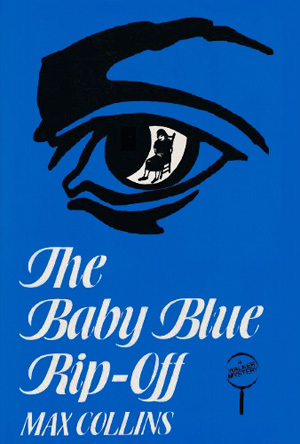
No Cure for Death was written at the University of Iowa where my instructor – my mentor – Richard Yates (Revolutionary Road) had taken me under his wing. I had already written Bait Money, which was my attempt to do a crime novel in the Richard Stark manner, and now I was ready to go first-person. I didn’t think I’d be doing sequels to either, so both books were rather slavishly written as examples of forms I was trying to master, in the case of No Cure For Death the first-person private eye novel (even though Mallory wasn’t a private eye).
The first Mallory had a lot of stuff taken directly from my life. Mal was a veteran of the Vietnam/counter-culture years, a struggling mystery writer living in a small town (Port City) in a house trailer (before Jim Rockford). The tale took place when the Vietnam war was still raging, and several plot elements tied it to that specific time. For that reason – and because I considered the second book (The Baby Blue Rip-off) better, I submitted that first. After it sold to Walker, I submitted the second book, presented as a kind of flashback to ground it properly in time.
The third Mallory, Kill Your Darlings, found me – I mean, Mallory – at a Bouchercon, the annual mystery fan/writer convention. The book was almost rejected because my editor, Ruth Cavin – with whom I always had difficulties – thought Mallory suddenly was no longer a nice person. Well, that was because ten years had passed between the writing of Book Two and Book Three. I wasn’t as nice anymore, in case you haven’t figured that out.
The best of the Mallorys is A Shroud for Aquarius, which was based on the suicide of a friend of mine and, I think, dealt with my recent past in a worthwhile fashion. The next one, Nice Weekend for a Murder, was about a mystery weekend and showed Mallory continuing to evolve into a kind of junior Ellery Queen. And we already had a senior one.
I much preferred Quarry and Nate Heller and a few other protagonists to essentially writing about myself. Ironically, the most current Quarry – the one that will be out in late 2026, Quarry’s Reunion, is probably the book in that series most heavily drawing from my life. But still not so directly – I’ve never killed anybody, after all. As far as you know.
So it’s nice to see an obviously smart reader cotton to something of mine that I wrote in what is now my distant memory.
M.A.C.
October 28, 2025
Call a Spade a Spade
The cover of my forthcoming (January 2026) novel, The Return of the Maltese Falcon, is turning up here and there online…so I’ll join in.
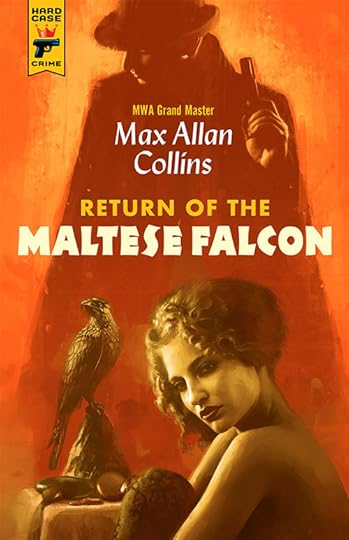
Coming January 6!
Hardcover:





E-Book:





And I’m pleased – frankly, thrilled – to share this Publisher’s Weekly advance review with you:
This stylish sequel to Dashiell Hammett’s The Maltese Falcon from MWA Grandmaster Collins (To Live and Spy in Berlin) picks up in December 1928, just days after the events of the previous novel. Rhea Gutman, daughter of late gangster Casper Gutman, asks PI Sam Spade to recover the eponymous, jewel-encrusted artifact. During the course of the investigation, Spade’s former lover, Iva Archer – who’s also the widow of his late investigative partner, Miles – demands a share of any profits from finding the falcon that might have gone to her husband, and drags Miles’s mob-connected brother into the picture to make sure she gets what she wants. When Wilmer Cook, Gutman’s vengeful former gunman, ambushes Spade, it’s clear he isn’t the only one hunting the falcon; Chicago gambler Dixie Monahan is after it, too. Then there’s British Museum curator Stewart Blackwood, who claims the museum legally owns the falcon after purchasing it from the original owner, General Kemidov. Navigating shifting allegiances and playing multiple sides, Spade races rival interests to claim the falcon for himself. Collins keeps the prose lean and sharp, true to Hammett’s style, and ushers the proceedings to a tidy conclusion. It’s a clever, well-executed tribute the hardboiled tradition. (Jan.)I’ve discussed how I came to write this novel elsewhere, but – to recap briefly – I had long been keeping my eye on the status of the original Maltese Falcon, re: public domain status, and was proactive (as they say) about trying to be first in line to take advantage of that status.
I love The Maltese Falcon – it’s my favorite book – and have fantasized about writing a sequel for years. I was frustrated by there only being one Sam Spade novel, and was ecstatic in high school when I stumbled across a copy of a paperback called The Adventures of Sam Spade, which included Hammett’s only three short stories about the seminal private eye.
Now, I realize there were fictional P.I.’s before Sam Spade, notably Race Williams, the prototype for Mike Hammer (Daly was Mickey Spillane’s favorite writer as a kid). But Spade was the template – the whole private eye genre so many (me too) followed was there, from the secretary in love with her private eye boss to the cop friend, from the cop adversary to the menacing thug, from the femme fatale to the formidable crime boss. It was – and is – all there…a genre Hammett in effect invented, perfected, and almost immediately abandoned.
As a kid – maybe 10 or 11, and already in the sway of detectives Dick Tracy and Sherlock Holmes – I heard The Adventures of Sam Spade on the radio. I’m not sure how, as the timing is wrong – the series was a ‘40s and very early ‘50s phenomenon, and I was too young. Maybe a nostalgia broadcast of some kind. But somehow I have that (maybe false) memory.
Something that is not a false memory – yet makes almost as little sense – is my seeing and enjoying the Sam Spade comic strip that appeared sporadically in Sunday newspaper comics sections. This was an ad disguised as a comic strip from Wildroot Cream-Oil (who later placed Li’l Abner and Fearless Fosdick ad/comics in newspapers and magazines). These were usually beautifully drawn by comic-book genius Lou Fine.
Why I know about this strip, I’m not sure – because of Dashiell Hammett’s clash with Joe McCarthy over the former’s communist leanings (and Spade star Howard Duff being similarly tarnished), The Adventures of Sam Spade became The Adventures of Charlie Wild before sputtering out around 1951.
And I have no memory of Charlie Wild.
Yet somehow Spade got on my radar. This may be due to my obsession as a youth with comics, particularly newspaper comics, as I would snatch up any old comics sections or even pages I came across. This is vague in my memory, as I say, but I do remember both the Spade radio show and the Wild Root ad/comic Sunday page feature (which was, I think, also printed in comic books and I was always snatching up older comics when I ran across them).
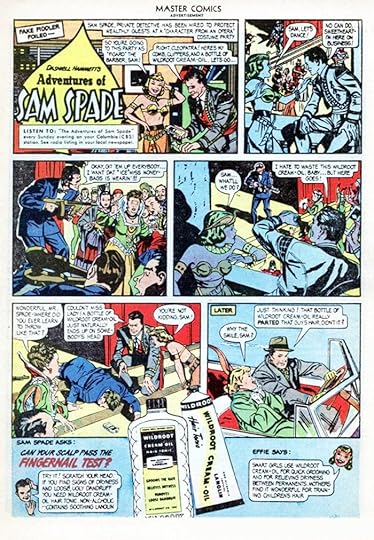
Source: https://thrillingdetective.com/2018/11/24/4010/
It’s not the famous movie that got Spade on my kid radar. I didn’t see that until I was in junior high and caught up in the private eye fad on TV (Peter Gunn, 77 Sunset Strip), which led me into reading the book series that many of these shows were based on.
I haven’t listened to many of the Spade radio shows over the years, because once I read The Maltese Falcon, I realized those shows were spoofy versions of a very serious (in the best sense) fictional character and his world. The series did adapt some Hammett stories early on (not Spade ones, to my knowledge) and a Falcon sequel I’ve never heard, either. This series is interesting to me only in having ingrained Spade further into the pop culture.
The three Spade short stories, incidentally, were published in 1932 and are probably a result of the first Maltese Falcon film (1931) with Ricardo Cortez as Sam. This version is better than it’s cracked up to be, as it’s pre-Code and includes Brigid’s enforced striptease. Donald E. Westlake liked the first attempt and recommended it to me. He even had it screened at one of his Mohonk mystery weekends (I was the murderer in the game, by the way).
Nobody likes the second version, Satan Met a Lady (1936). The detective (Warren William) isn’t even called Sam Spade, although the film’s title seems to refer to Hammett’s description of Spade on the first page of The Falcon.
I made a point of avoiding re-screening either the ‘31 or the ‘41 version (and or course didn’t bother with Satan Met a Lady, even if it did have Bette Davis in it). I wanted – needed – to focus on the Hammett novel itself and not attempt any tie to the Warner Bros film.
That may seem odd, since John Huston’s Maltese Falcon is famously incredibly faithful. Legend has it the screenplay was just Huston’s secretary typing up the dialogue from the book for the director, and then that “script” got accidentally green-lighted. Probably apocryphal, but a wonderful story nonetheless.
And to bring Don Westlake back into it, we shared with each other that we’d both followed the movie along in the book.
How is the Huston film different from its source? Mostly it’s Bogart. The Spade of Hammett’s novel – and mine – lacks the warmth that peeks out, and sometimes surges out, from Bogie’s Sam. But Sam Spade as Hammett conceived him was self-contained and even cold. The book and the famous film also have a slightly different tone – the jaunty score is a factor.
I do wonder how many readers of my novel will picture Bogart as Spade, despite my echoing the Hammett description of a blond Satan.
You can pre-order the novel here.
M.A.C.
October 21, 2025
One-Star Amazon Reviews and Bobby Darin and Dragnet, Oh My!
J. Kingston Pierce of The Rap Sheet – one of the best (if not the best) crime fiction web sites around – has long been a supporter of my work and this update/blog.
He wrote me recently: “I have suffered through spotty access to your blog for months. I generally use the Mozilla Web browser, but more often than not that has told me, ‘the page isn’t redirecting properly’ when I tried to pull up your web site….So decided to download the Microsoft Edge browser recently, and voila! Suddenly I have access again to your blog and the rest of your web site. That’s how I learned–finally–that you were rethinking which Nate Heller novel to write next, about which I wrote in my latest Rap Sheet “Bullet Points” post.
I am thrilled to have Jeff Pierce back in the fold, and he has since written a terrific piece in his other blog, Killer Covers, about the Paul Mann painting adorning the forthcoming Quarry’s Reunion and the character’s upcoming 50th reunion.
* * *Barb and I usually watch a movie in the evening, and sometimes I follow up with another, after she heads to the Land of Nod.
In my need for something more bite-size (when another movie seems too much), I have become something of a You Tube addict, and – minorly to say the least – a You Tube celebrity (?!). I appear every Sunday on Robert Meyer Burnett’s Let Get Physical Media, which airs at one p.m. Central Time, with me showing up around 2 p.m. for my True Noir segment, in which I discuss film noir and other crime/mystery films that have appeared recently on physical media. My segment is usually around an hour. (See below for a link to a recent episode.)
Today I want to share some samples of wonderful things I’ve found and watched on You Tube, starting with Paul F. Tompkins presenting the Amazon 1-Star Review Theater, which I think any fiction fan will find hilarious.
From near the end of his life, my favorite performer is seen in this clip doing one of his best hits. Like “Mack the Knife,” this one – “Artificial Flowers” – is all about Bobby Darin thumbing his nose at the early death he knew he was facing.
This is a prime example of 1950s Dragnet, though it’s not the first episode, as it’s labeled. It demonstrates what a terrific director Jack Webb was, how quietly well-acted an episode could be, and how innovative the writing (I believe this was from a James E. Moser radio script). What characterizes Webb’s direction is a combination of verbal understatement and visual shouting. That’s a function of the need to fill small early ‘50s TV screens with something big and eye-catching.
Webb had actually been something of a comedian on some of his radio shows (hard to believe, I know) and his sense of humor (sometimes fine, sometimes cringe-worthy) began to creep into later episodes. When the humor worked, it was usually with the unusual and sometimes overtly comic witnesses Joe Friday and his partner would interview; when it didn’t work, it was usually in other witness interviews, the idea being that Friday and Smith would be low-key and the funny witnesses over the top.
But Webb transformed cop shows on early TV much as I, Love Lucy transformed sitcoms. He truly is an unsung genius. If you only know Webb’s late ‘60s and early ‘70s color Dragnet, you don’t know what he – and his famous program – was capable of.
Here’s a link to the most recent episode of Let’s Get Physical Media, where in my True Noir segment I discuss, among other things, the great under-remembered crime writer, W.R. Burnett.
I also have done several segments with my buddy Heath Holland on his Cereal at Midnight channel, where we talk about our favorite films in various genres. Here’s one of them, as we chose our ten favorite Westerns (five each).
* * *
Finally, as Halloween approaches, I thought I might take the liberty of recommending a horror novel of my own…well, and of Mickey Spillane’s. This one has flown under most readers’ radar, and I’m proud of my contribution to Mickey’s only strictly horror-oriented novel. Get it here. It’s considerably cheaper than at Amazon.
M.A.C.
October 14, 2025
Completing the 50th Anniversary Quarry Novel
The past week was a tough writing one. Two days of writing that wrapped up a complex plot better than I could ever have hoped. This left me in an almost celebratory state, because I finished Quarry’s Reunion, the 50th anniversary Quarry novel (the first book in the series, Quarry – originally titled The Broker – was published in 1976).
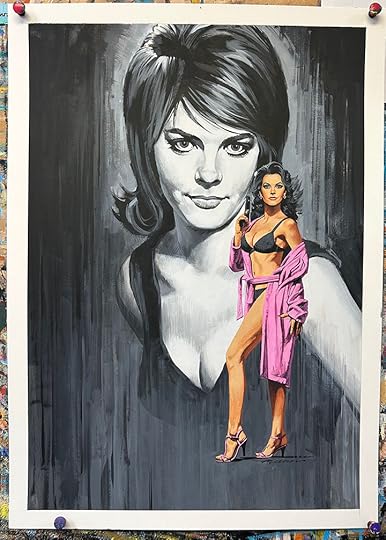
Art (copyright 2025) by Paul Mann for the cover of QUARRY’S REUNION, to be published in late 2026.
I had wrestled with the plot, which is an unusual one for Quarry as it’s a more traditional murder mystery than a crime novel, and has lots of moving parts, more Christie than Spillane. Right now I don’t know how my editor and agent will react to a change of pace like this; but I can really only write the novel that wants to be written. This one, appropriately given the 50th anniversary aspect, delves into Quarry’s past in a way I never have before.
The story that presented itself to me was almost something out of Grace Metalious. If that reference doesn’t mean anything to you, or even if it does, I’ll just say she was the underrated author of Peyton Place, one of the best-selling (and most scandalous) novels of the ‘50s and early ‘60s. I had to develop a whole cast, even generations thereof, the residents of a town in Ohio about the same size of my own smallish Muscatine, Iowa. I literally (not figuratively) wrote half a dozen breakdowns of the characters and their relationships, both familial and romantic, detailing a trust fund that would be the engine of the mystery, i.e., who would/could benefit financially from the death of a character or two.
These cast breakdowns and plot notions were very complicated, and my writer wife Barb suffered through each of them, telling me what worked and didn’t.
Further complicating matters, I began the book – did several chapters – before going into the hospital for an ablation procedure to deal with my a-fib. This turned into a nightmarish month of emergency room visits, ambulance rides, and three hospital stays, the middle one of which found me hallucinating about where I was and whether or not I was investigating a murder.
I wrote about this here before.
I bring it up, because it’s not normal for me to return to a book I began and plotted before having surgery and hallucinations. Kind of hard to just get back in.
But pretty much that’s what I did, although the intricacies of this plot with its Peyton Place-type sexual and criminal shenanigans found me having to re-plot every chapter or two. I often say that fiction writing consists of solving problems of your own creation.
So after I finished the book, having read it and made my revisions (minor as usual), I was pleased that it seemed, as Larry David would say, pretty, pretty good.
I work in WordPerfect and have to convert a manuscript to Word for submission to my editor. This inevitably has some hick-ups, some glitchy travails for Barb – who enters my corrections and the more minor revisions – and me. That makes this inevitable day of getting the book in shape to send always a stressful one.
But we got it out that door, sent to both my editor and my agent.
Whew!
Great to have that over!
I slept soundly and well that night, content that all was right in the world, except for our political situation of course, and then, at 4:44 a.m., I sat up in bed, horribly wide awake.
Somewhere in my brain, while I slumbered, the realization formed that I’d made a mistake in the novel, a really, really big one, with ramifications that would echo through the entire novel.
I got up and tried to solve the problem, resolve the issues it created. I sat in my recliner downstairs with a notebook in my lap and wrote down ideas, timeline shifts, anything I could come up with that wouldn’t damage a book I really liked as it was…but definitely required fixing. How to do that without a page one rewrite?
Barb noticed some lights were on downstairs and came down from the master bedroom to see what was up – had they been left on? Certainly her husband couldn’t be up at 5:45 a.m.!
But he was.
And never gladder to see my lovely bride.
I told her of my massive screw-up, and Barb – who reads my books in progress, chapter by chapter – admitted she hadn’t noticed the goof either. (By the way, I have no intention of sharing with you what that goof was. This piece is as close to an admission as you’ll get.)
We batted ideas around. We each came up with solutions, but none of them were easy or even practical fixes. As you might imagine, this went on for a while. I can only say I was grateful – felt blessed – to have a writer for a wife who could help me in a situation like this.
Finally we came up with something, something that would be manuscript-wide but mostly cosmetic, not disrupting the narrative and its flow.
I did not go back to bed. (I had already, by the way, sent my editor and agent e-mails telling them to dump the previous version of the book I’d sent them. A new version would be along soon.) I went back to the keyboard.
I’m not sure, but I think I worked up till about 4 p.m., with a short lunch break, and sent to my editor and agent the revised version. Then I took a long, long nap.
The next day I was worthless, as you might imagine, tired as hell and unsteady; but relieved. So very relieved.
Thank you, Barbie.
* * *This good interview with me by the great Andrew Sumner of Titan, at the San Diego Comic Con, is right here:
M.A.C.
October 7, 2025
Happy Publication Day! And Conjuring Up an Injustice
October 7 – the day this update appears – is the publication day of the new Trash ‘n’ Treasure mystery by Barb and me – Antiques Round-up!
Barb did a fantastic job on this one and I added my own touches, too. When she told me about some of the wacky things she was planning to do in this one, I had my doubts she – or anyone – could pull them off…but she did! “Yippee-ki-yay, Mother (and Brandy)!”

Hardcover:






E-Book:




Barb is hard at work on her draft of the next book in the series, Antiques Web. She should be done by year’s end and I’ll saddle up for my draft come first of the year.
In the meantime, the movie that brings Brandy and her mother Vivian alive, Death by Fruitcake, should be available soon…we’ll let you know how, and where, to see it!
* * *I have enjoyed the Conjuring movies, including the latest one (The Conjuring: Last Rites). I did wonder why in this latest installment nobody seemed to know how to switch on the lights when going into a room, but, hey – it’s a haunted house movie, so you need it dark.
The scariest thing about Last Rites is how cavalier Hollywood can be about giving credit where credit is due.
Before I get into this, let me say I am well aware that writers sometimes have to sign a work-for-hire agreement to get a gig. I signed plenty of those back when I was writing novelizations of movies and original novels based on TV shows. I get that.
But now and then something a writer has done as work-for-hire goes places nobody anticipated. For example, Joe Shuster and Jerry Siegel were screwed out of Superman because they had signed work-for-hire agreements when they were teenagers. It took decades – effing decades – for DC Comics to give anything to their estates and to include a “created by” screen credit for Siegel and Shuster on any new Superman movie.
Which brings me to Ed Gorman.

Ed Gorman (1941-2016) and his wife Carol
Ed was one of my two or three best friends in the writing business. He was probably the best short story writer in the genre. He was one of the best incredibly prolific writers of novels. I never read anything by him that wasn’t smart and engaging; he could be a little dark at times, but that was leavened with wry humor.
We used to talk on the phone, in those pre-social media days, for hour upon hour. He was incredibly affable and funny in those conversations, not only with me but in phone conversations with many others in the field. Nonetheless, he was notoriously a near recluse. I am one of the few people in mystery fiction who Ed spent time with in person. We even did some signings together, and he came to one of my band’s performances, at which he seemed loose and easy and to be having a great time. Later he told me he’d been terrified.
He was a unique person and a fine writer. I once told Barb that if I died before completing a novel to give it to Ed to finish. That’s how high my opinion was and is of him.
One of the ways Ed made a living was writing books for Ed and Lorraine Warren, the famous psychic/demon-hunter couple whose “real” adventures are the “factual” basis of the Conjuring movies.
Has anyone who saw one of those movies – and, again, I am a fan – believed them to really be “based on the true story”? That the outlandish things that happen on screen really did in real life? I don’t hold that against the Warrens or those who’ve turned their tall tales into films. I like a good scary story.
Here’s another.
One of the books Ed ghosted for the Warrens was called The Haunted. It became a TV movie and he may have received some payment for that, though I’m not sure. Ed did not receive a byline on the book, but the first page says this:
Special thanks and acknowledgmentto Ed Gorman for his work on this book.
Ed developed The Haunted from 40 pages of notes provided by a reporter working with the Warrens, and spoke with both the Warrens and the Spurl family (who lived in the “haunted” house). I remember Ed telling me he didn’t have much to work from, and didn’t believe any of it anyway. So he just wrote a horror novel, he said, which would be sold as “non-fiction” (his quotes). He was clear about creating much of it out of whole cloth.
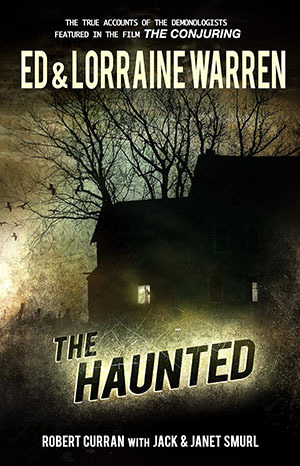
Ed was good at horror novels. Very good. He did most of them under the name “Daniel Ransom.” So the Warrens chose wisely.
The Conjuring franchise has made two billion dollars. The Conjuring: Last Rites had grossed over $187 million worldwide by September 7, 2025. The film’s debut included $83 million domestically and a record-breaking $104 million internationally.
The movie is based on The Haunted, which Ed Gorman wrote.
His estate has been paid not one cent.
He receives no screen credit, not even the acknowledgment that the original book carried on its first page.
It’s possible, maybe probable, that Ed signed a work-for-hire contract. It’s also likely he was paid only a few thousand dollars for the work. So maybe Warner Bros/New Line doesn’t owe him anything, legally. But I am of the opinion that, even so, his estate deserves a taste, and Ed deserves screen credit.
But that seems unlikely to happen.
As Count Floyd would say, “Scary, kids, scary!”
M.A.C.
September 30, 2025
Hey Kids! It’s Book Giveaway Time
We’ve not had a book giveaway here at the Update for some time, and I’m about to remedy that.
Last year Hard Case Crime reissued The Last Quarry in trade paperback form (with some bonus material in back, two of the three Quarry short stories from the ‘80s). Now HCC is taking the same trade paperback approach with The First Quarry (minus the bonus short stories).
What makes these reissues notable?
Well, the first three Quarry novels Hard Case Crime published (The Last Quarry, The First Quarry and Quarry in the Middle) appeared in the smaller original mass-market paperback size. This is for all of you who like to shelve your titles together – whether you are OCD or just particular – and would prefer your row of Quarry novels be all of the same format/size. Now you we no longer have to suffer with the indignity of the first three novels not lining up perfectly with the rest! Even the first four novels, as originally published by Berkley Books, were originally in mass market size. The fifth, Primary Target, re-titled Quarry’s Vote at HCC, was in hardcover and then a mass-market-sized paperback. All five are now HCC trade paperbacks.
I believe, though I am not absolutely certain, that Quarry in the Middle will also receive a trade paperback edition from Hard Case Crime, next year.
So, even if you have the original edition of The First Quarry, you are welcome to participate in this book giveaway. It works like this: e-mail me requesting the book at macphilms@hotmail.com. Even if you’ve won a title in a previous giveaway of mine, you must include your snail-mail address. Though no strings are attached, it would be nice if you’d review the book at the Amazon and/or Barnes & Noble sites, or your own blog, if you have one. The offer is open to US residents only, due to shipping costs.








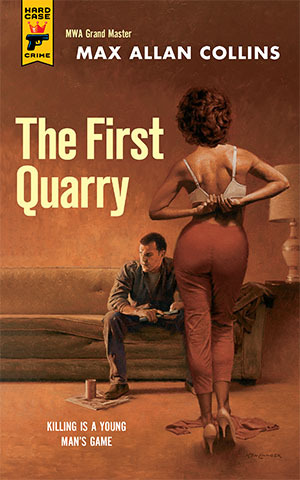







I’ve talked about this before, but just in case you didn’t hear it from me, on an Update or otherwise, here’s why The Last Quarry was not the last Quarry, and why The First Quarry is not the first Quarry.
When Hard Case Crime got started, editor Charles Ardai approached me about reprinting Blood Money, the second book in my Nolan series (the first being Bait Money). I requested he collect both books in one volume, asking for no extra money, as I thought it awkward to start with the sequel to a long-out-of-print book, which Bait Money was at the time. He agreed and you can now get those books together as Two for the Money.
The Nolans did well enough for Charles to request I do another in the series. I said I’d prefer to do a Quarry novel. The series had something of a cult following (of course, as Donald E. Westlake said, a cult author is seven readers short of making a living) and I’d always felt the character should have put me on the map, which it hadn’t. The series was in fact dropped by Berkley Books after those first four entries.
But I’d recently made (with director Jeffrey Goodman) a short film about Quarry, based on my short story “A Matter of Principal.” The film did well at festivals and was warmly received when screened at a Bouchercon.
For this reason, and my own affection for the character, I wrote The Last Quarry for HCC, telling Charles I was thrilled to be able to wrap the series up (as the title suggests). I’d also been promised a Robert McGinnis cover, which I got. (And I should note that The Last Quarry was based on my screenplay of the eventual film called The Last Lullaby. The final film differs somewhat from my novelization.)
Then the damnedest thing happened: The Last Quarry was a success, garnering good sales and terrific reviews.
CUT TO: Charles and I are standing in a buffet line at a subsequent Bouchercon when he says, “It’s too bad you ended the series with The Last Quarry.” And I say, “Why don’t I write The First Quarry?”
Thus began a long series of Quarry novels (I’m working on Quarry’s Reunion, the thirteenth for Hard Case Crime), novels that have earned several Shamus nominations from the Private Eye Writers of America and two Edgar noms from the MWA. And there was a one-season of a QUARRY TV series from HBO/Cinemax, focusing on Quarry’s origin.
Not bad for a busted mid-‘70s paperback series.
Most of the new novels have me exploring the premise of Quarry using the late Broker’s list to track assassins to their next target, and offering a service to that target: stopping the hit by killing the assassins and discovering who bought the kill contract. This is what was set up in Quarry’s List, the second of the original four novels.
Some of these subsequent novels, like The First Quarry, tell of contracts Quarry carried out prior to – it gets confusing now – the events of the first Quarry novel (originally published as The Broker, currently carrying my preferred title, Quarry). Among these contract-killer novels are Quarry’s Choice and Quarry in the Black.
Another sub-set in the series are the “old man” Quarry novels, where the character is roughly my age Quarry’s Blood, Quarry’s Return).
I run into potential readers wanting to know what order to read the books in. I always say, I didn’t write them in order, so why read them that way? I would prefer to point such readers to two particular favorites of mine, Quarry’s Choice and The Wrong Quarry.
Is there a difference between the first four (Quarry, Quarry’s List, Quarry’s Deal and Quarry’s Cut) and subsequent entries, including the one I’m working on now?
Yes. There is more humor – dark humor, but more – in the later books.
One reason I didn’t try to take the series elsewhere, when Berkley dropped it, was my feeling that each novel had to top the last in extreme violence. Why did I feel that way? It’s not because I’m a sadistic nincompoop. It’s because, structurally, the early books are about showing Quarry in the first chapter or so doing something terrible, then in subsequent chapters (the bulk of the book) getting the reader to kind of forget that and come to like Quarry and view him as a reasonable guy (and a point-of-view character you could take the ride with). Then, at the end, faced with a situation that an actual normal human would otherwise deal with, Quarry again does something terrible.
All of this grew out of my desire to, in my way, top the great Richard Stark (Don Westlake) Parker novels. I had already written the first five Nolan novels, which were frankly imitative of the Parker series. I instead wanted to show readers (like me) of “crook books” with protagonists who worked the left-hand side of the street just what kind of “heroes” we (me) were identifying with.
The Parker novels were heist yarns told in third-person, giving readers some distance between them and the criminal events. I decided to do, instead of a professional thief, a hired killer, and tell the stories in the first person – put the reader inside Quarry’s head, and ultimately confront readers with just who it’d been they were rooting for.
To some degree, this approach is inherent in the later Quarry novels, yes, but the dark humor (I think) leavens the often nasty events of the narratives. That frees me from sense that I need to top the last book with some truly awful thing that Quarry does at the finish (although even then, in the Mike Hammer tradition, he is removing a bad guy or two or three).
The original novel – The Broker AKA Quarry – has this ambivalence built in. In that novel – never intended to launch a series – hired killer Quarry, to save his own ass, must solve the murder he committed.
Now Quarry’s 50th anniversary is just ahead (2026). I’ll try not to disappoint with Quarry’s Return.
* * *Here is a list from Collider of the 20 best comic book movies. Guess what’s number two?
M.A.C.
September 23, 2025
Why I Am Troubled
As I’ve stated, I try to stay out of politics here.
And I don’t think what I’m about to discuss violates that, at least not exactly. I’ve seen people from the left and the right speaking out about the Jimmy Kimmel situation.

Look, anybody can get fired. When you work for somebody, and they don’t like the work you’re doing, they have no obligation to put up with you. I’ve been fired. I was fired when I wrote the Dick Tracy strip largely because the editor (not the editor who hired me but his replacement) did not like my work and did not like me, and also because the Tribune Syndicate wanted to save money by using a staffer and not a freelancer.
That was unfair, obviously, but I always knew that could happen. I had a five-year contract that was renewed for another five years twice. It was a good run and a good paycheck.
So in that sense, what happened to Jimmy Kimmel is not a freedom of speech issue. ABC hired him, ABC can fire him (or suspend him or whatever). What is dangerous – what is wrong – is the way the FCC muscled ABC into getting rid of Kimmel. The FCC – backed by taxpayer money, which is to say you and me – was pursuing a political agenda. With ABC and Disney trying to get the FCC to approve a merger (that breaks the FCC’s rules), the actions of the FCC are strictly straight out of the Mafia playbook – it’s the protection racket, in a sense, and it’s authoritarianism adjacent (at least). “You can do it the easy way or the hard way,” a thug says.
Anyone working in the world of media can now be punished for having the wrong opinion. This potentially can extend beyond talk show hosts to the newsrooms and then to movies and books and even comic books.
I am not someone who watched Jimmy Kimmel. When Letterman retired, I decided I had better things to do than watch the ephemera that was late night talk shows. I might prefer to read or watch something else (an old movie maybe or even a new one) or work or even go to bed. I appear to have gotten older and now run out of steam sooner.
But this is troubling. It goes beyond Democrat and Republican into American. And other than to speak up – while I can – I don’t know what the hell to do about it beyond cancel Disney Plus, which I have.
The only other thing available to me is speaking out here. If I’ve offended anybody, I welcome them to object in the comments. But first I’ll remind them that the First Amendment allows us all to have our opinions, smart or stupid, in agreement or disagreement.
For now.
M.A.C.
NOTE: The above was written before the Kimmel situation changed (somewhat).
Let’s ask George Carlin what his opinion is:
September 16, 2025
The Writing Life
A box arrived from the UK with a few advance copies of our new Antiques/Trash ‘n’ Treasures mystery, Antiques Round-Up. When I say “our,” of course, I mean Barb and my latest novel in the now long-running series.

I have watched, I guess it’s been for decades now, Barb developing into a terrific writer. She was good out of the gate, and like most of us, her improvements are somewhat incremental and don’t make themselves clear until some time has passed and those improvements have accumulated.
I know I still think I’m improving as a fiction writer even at this late date. I’ve been writing long enough to have no doubt lost my fast ball here and there, but certain craft things have improved. Or at least I’m still trying to have them improved.
Barb and I have different approaches. She is slow-and-steady wins the race. Even now, I may not spend more than two months writing a novel (depends on the novel of course), but she spends most of her writing year on one book in the series. Fiction writing is a love/hate affair, but I have always loved it more than hated, and often Barb seems to be the other way around. She always talks about the current book being the last one she’s willing to do, while I’m always looking for more books to write, as if as long as I have a book contract, that God or the Grim Reaper or whatever will wait for me to finish the current novel.
If there’s a point to this ramble, it’s how proud I am of the way Barb has risen to a truly professional level, and this latest book – which will be published a couple of weeks from now – is evidence of that.
We were published for years by Kensington, but our current home is Severn House, a UK publisher that puts a lot of their emphasis on the United States market. But we do hear from readers who dropped away at the point Kensington stopped publishing us, largely because – thus far – the series has been tricky to find in Barnes and Noble, and BAM and other of the surviving brick-and-mortar book stores.
Some of these readers don’t even know the series is continuing, and when they find out it is, want to know where they can get back onboard. Both Amazon and Barnes & Noble have the Severn House books in hardcover and e-book; and all of them eventually become available from those sellers in handsome trade paperback editions.
We have had a lot of Hollywood interest in the Antiques novels – specifically for TV – over the last fifteen years. It’s gotten very close – very – but as yet no cigar. That’s why we made an Antiques movie ourselves, Death By Fruitcake, with Paula Sands (legendary Midwestern broadcaster) as Vivian Borne and Alisabeth Von Presley (Midwest pop superstar) as Brandy Borne. We’re proud of our little movie – I scripted it from a Barbara Allan novella (Antiques Fruitcake) and Barb co-produced and served as production manager.
This past week Chad Bishop, our co-producer (and Director of Photography and Editor) and I began dealing with the “deliverables” (the things a distributor requires) for Twin Engines Global. This ranges from getting trailers and the film itself to them and making closed-captioning happen and taking lawyer meetings about getting an LLC put together and a hundred other things.
Certainly easier to just write a damn book. It was however a fun, hard, unforgettable experience, shooting and editing it and all, and I wouldn’t trade it for anything.
Meanwhile, I am almost half-way through the new Quarry novel, Quarry’s Reunion, which will be the 50th anniversary book in a series that I thought Berkley Books had killed 49 years ago…but thankfully Hard Case Crime unexpectedly resuscitated it in 2006 with the help of filmmaker Jeffrey Goodman, who made a short film from my script (A Matter of Principal) and a film version of The Last Quarry (The Last Lullaby). Fans also helped keep it alive.
I mentioned that fiction writing is a love/hate affair. Though she seldom grouses, I know Barb finds writing difficult. Funny thing is, after all this time, so do I.
I will spend a full day writing two or three pages of description and set-up for a chapter, or an hour on one paragraph; fortunately for me, the rest goes a lot faster, and dialogue scenes fly, as they need to when readers encounter them. Most of my novels are mysteries, obviously, and I re-plot them constantly as I go. Quarry’s Reunion had five or six preliminary overview outlines, and I’m on the fifth or six chapter breakdown now.
Part of this is my approach being half planning, half improvisation. I try to know enough about the story I am about to tell without mounting my horse and riding in all directions. So I know major things – like who-dun-it and why. Then I come up with a plan, a road map, a structure, that may be twenty pages long. But I try to keep it loose enough to make discoveries as I go. This has me revising the plan, changing and tweaking the trip I’m taking, as I go.
Here’s another difference between writers. Though we come up with the “Barbara Allan” basic ideas together, Barb rarely asks me for an opinion or plot help or anything while she’s writing her draft. I’m willing to help, and often offer – but I have too many ideas, too many ways to solve a problem, to do anything but frustrate her, throw her off-track. So except in cases of emergencies, I keep tabs on what she’s doing on her draft, but don’t interfere. And when I do my draft, she gets out of my way. She does read my chapters as I go, so can catch anything I’m doing that will upset the plot applecart.
I mentioned above that I sometimes spend a day on a few scene-setting opening paragraphs, or an hour or more on a transitional paragraph between breaks within a chapter. And in recent years – due, I’m afraid, to all the media around us dumbing everybody down – I get some (not a lot) of readers and reviewers complaining about what they see as needless description. I will defend that only with this: I have to see a scene in my mind before I write it; and in description – yes, even clothing – I am writing about character as much as anything.
Still, as I said to Barb the other day, “It’s frustrating to spend so much time on the stuff some readers skip.”
Here’s where you can pre-order Antiques Round-Up; it’s out on Oct. 7. It’s likely also available via the Net at anywhere else you like to buy your books.

Hardcover:






E-Book:



 * * *
* * *Here’s a review of The Two Jakes 4-K Blu-ray (from Kino Lorber) that is a comprehensive look at the film and the disc, and includes the commentary by Heath Holland and myself about the film. You have to scroll down to read that, but the whole review (my opinion is higher than the reviewer’s of the film itself, but the review is thoughtful and fair, even when I don’t entirely agree with it).

This a new bio of me at a Dick Tracy Wiki site. Looks extensive, though I admit not reading it yet.
M.A.C.



